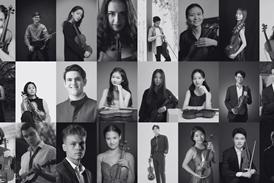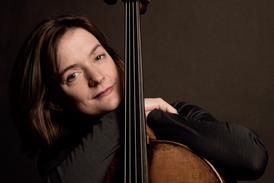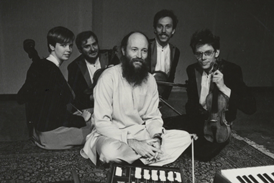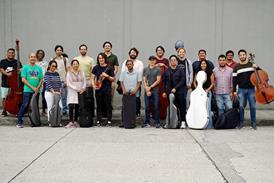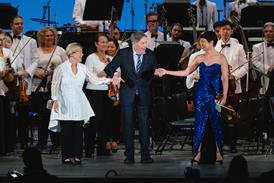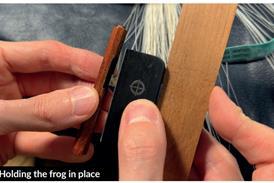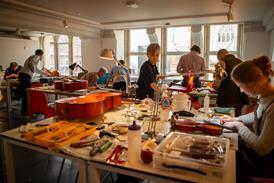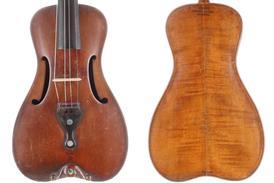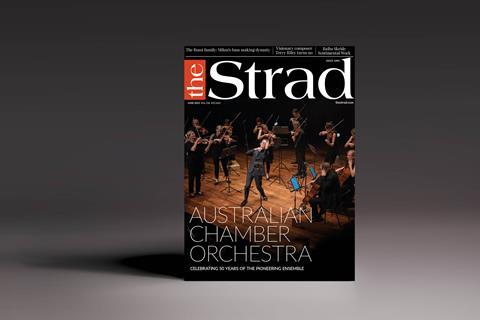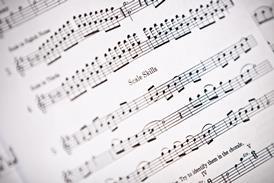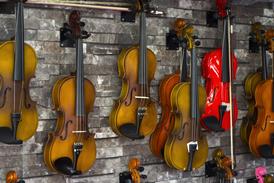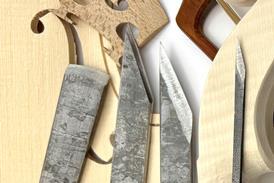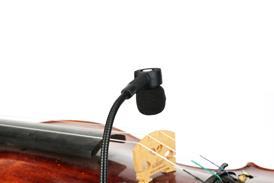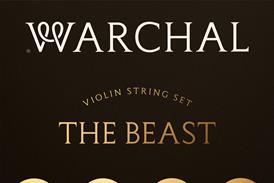Lutherie – Page 20
-
 Premium ❘ Feature
Premium ❘ FeatureThe art of Computer Numerical Control arching
Yann Poulain reveals his method for roughing out the arching of the front and back plates using the technology
-
 Premium ❘ Feature
Premium ❘ FeatureMicro-CT scanning the 1727 ‘Benvenuti’ Stradivari violin
Rudolf Hopfner, director of the Collection of Historic Musical Instruments in Vienna, explains the process of scanning an instrument, and what the scans of the ‘Benvenuti’ tell us about its construction in this article from December 2016
-
 Premium ❘ Feature
Premium ❘ FeaturePerfectly preserved: 1727 ‘Benvenuti’ Stradivari violin
Despite its rich performance history, the 1727 ‘Benvenuti’ Stradivari violin is in an excellent state of preservation. Andrea Zanrè tells its story in our December 2016 issue
-
 Premium ❘ Feature
Premium ❘ Feature‘I’m happy to show them around’ - My Space: David Ayache
Visit a 13th-century workshop in the heart of Montpellier, France
-
 Blogs
Blogs‘A huge versatility of sound’: Arabella Steinbacher on the 1744 ‘Sainton’ Guarneri ‘del Gesu’ violin
The violinist was recently loaned the 1744 ’Sainton’ Guarneri ‘del Gesu’ violin for her new recording of Bach and Pärt. She shares her thoughts on the instrument with The Strad
-
 Premium ❘ Feature
Premium ❘ FeatureIn Focus: A 1939 Simone Fernando Sacconi viola
John Dilworth takes a look at an instrument by the 20th-century luthier
-
 Premium ❘ Feature
Premium ❘ FeatureCremonese Varnish: Coats of many colours
Pierre Flavetta reveals the results of his historical research into the colourants and methods available to the luthiers of Stradivari’s day
-
 Premium ❘ Article
Premium ❘ Article‘No way fit to express an opinion’: From the archive: February 1933
Author and luthier Robert Alton rails against ‘The Amateur Violin Expert’ – even reserving a few harsh words for the professional expert as well
-
 News
NewsLuthier and bow maker Boyd Poulsen has died
The American polymath, a respected musician, lecturer and botanical expert, was 87 years old
-
 Premium ❘ Feature
Premium ❘ FeatureIn Focus: A 1953 Giuseppe Ornati violin
Alberto Giordano takes a look at a mid-20th-century Italian violin
-
 News
NewsUS National Music Museum begins reopening project
The institution, which has been closed for several years, will reopen in phases throughout 2023
-
 Premium ❘ Article
Premium ❘ ArticleAuction Report February 2023: Rarities and English gems
A unique Stradivari viola and a record-breaking Daniel Parker viola were among the highlights of the London sales in October 2022. Kevin MacDonald reports
-
 Premium ❘ Article
Premium ❘ ArticleAnalysis February 2023: Problems with pernambuco
The CITES CoP19 conference brought the pernambuco situation into sharp focus. How can the music community take the issue forward into the future?
-
 Focus
Focus7 tips on adjustments to get the best out of your instrument
The finest Stradivari in the world will sound poor if it is badly set up. Here are some points to consider sourced from our archive
-
 Premium ❘ Feature
Premium ❘ FeatureIn Focus: an 1859 violin by Nicolas-François Vuillaume
Roland Baumgartner examines a violin representing a free interpretation of the work of Guarneri ‘del Gesù’, by J.B. Vuillaume’s younger brother
-
 Premium ❘ Focus
Premium ❘ FocusIn Focus: the 1696 Stradivari ‘Archinto’ viola
John Dilworth praises the archetypal beauty of Stradivari’s ‘Archinto’ viola, a magical example of form and aesthetic
-
 Premium ❘ Focus
Premium ❘ Focus‘Cut the Stradivari cord’ - Opinion
Luthier Paris Andrew argues that, rather than copying Antonio Stradivari models, makers should study other beautiful instruments that exist
-
 Premium ❘ Feature
Premium ❘ FeatureMaking Matters: How I set up a violin making workshop during the pandemic
Ian McWilliams explains how he set up a summer violin making workshop near the German capital
-
 Premium ❘ Feature
Premium ❘ FeatureIn Focus: A c.1776 Domenico Busan viola
Joseph Grubaugh and Sigrun Seifert take a look at a viola from the Italian maker
-
 Premium ❘ Feature
Premium ❘ Feature‘Makers have been working blind’ - Cremonese archings
Gareth Ballard presents a detailed method for analysing the various curves of archings



